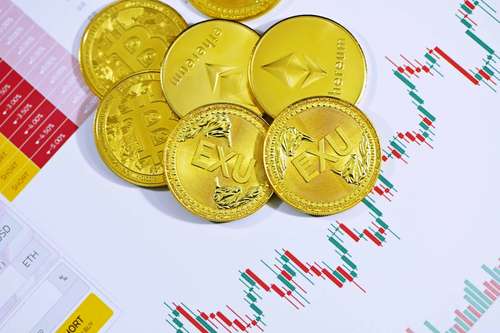The crypto market may have found its way back to a path to recovery — these 4 signs may tell how ready we are for another bullish season.

Bitcoin, the backbone of the cryptocurrency world, has been on a wild ride lately. Its value has gone up, then down, then up again, and now it's kind of leveled out.
Investors are holding their breath, wondering if this means the good times are back for good or if there are some subtle signs that things might not be as great as they seem.
Despite the recent pullback and various assertions regarding the continuation of the bull run, four indications suggest the bull market might not be as robust as some believe.
1. The Mining Conundrum: Prolonged Block Production
One prominent sign that hints at a potential shift in the Bitcoin market dynamics is the time it takes to mine a block.
The influx of miners into the Bitcoin network has led to adjusting BTC's difficulty target to an unprecedented high. This adjustment was observed on November 26, reaching nearly 68 T, showing the escalating number of participants in the mining process.
An interesting occurrence emerged on November 7, when Bitcoin experienced an unusually extended 43-minute period to produce a new block.
Subsequently, after producing block 815,689, the network took 66 minutes to generate the subsequent block 815,690. This elongation in block creation time, happening more frequently due to increased miners, indicates a notable congestion within the network.
2. Institutional Inclination: BlackRock's Interest in a Bitcoin ETF
A significant shift in sentiment within institutional entities is evident in the crypto space. BlackRock, an asset manager overseeing trillions of assets, has expressed interest in launching a regulated Bitcoin ETF, marking a stark departure from his previous stance.
Once dismissing cryptocurrencies as lacking legitimacy, BlackRock is now seeking avenues to engage in the cryptocurrency market.
Despite reservations about the industry's regulatory status and transparency, BlackRock's pursuit of a Bitcoin ETF signals a perceived upside that outweighs potential risks. So, this shift in the perspective of institutional giants like BlackRock shows a change within the cryptocurrency domain.
3. HODLing Amidst Gains: Long-Term Bitcoin Holdings
Amidst the remarkable surge in Bitcoin's value, most holders have exhibited a steadfast "HODL" mentality.
Despite the enormous gains observed in recent months, a substantial portion of Bitcoin holders have refrained from selling their assets, which indicates a robust belief in the market's upward potential.
Blockchain data reveals a staggering 70% of the circulating Bitcoin supply—equivalent to 13.65 million BTC—has remained dormant for a year or longer. This steadfast holding pattern suggests a high concentration of long-term investors who remain steadfast in their belief that the current bullish phase is far from reaching its culmination.
4. Institutional Trading Volumes: CME Group Surpasses Binance
Bitcoin futures contracts, which offer a derivative investment allowing speculators to secure future asset prices, have witnessed a notable adjustment.
Notably, the Chicago Mercantile Exchange (CME Group), a derivatives marketplace for regulated investors, has overtaken Binance, the largest cryptocurrency exchange, in terms of open interest in Bitcoin futures contracts.
According to data from Glassnode, CME's Bitcoin futures open interest exceeded that of Binance in early November. This was a significant moment since the 2021 bull market. The continued dominance of CME over Binance in December highlights the sustained institutional interest in Bitcoin among regulated investors.
As Bitcoin continues its trajectory, these signs present a subtle perspective on the current state of the cryptocurrency market. While opinions regarding the revival of the bull market abound, these slight indicators hint at potential shifts and complexities underlying Bitcoin's journey. The interplay of institutional interests, mining dynamics, and investor sentiments adds layers of difficulty to the ongoing narrative of Bitcoin's trajectory.
Institutional Interest: A Major Catalyst?
Amid the fluctuating prices and market sentiments, the interest from institutional entities in Bitcoin's potential as a lucrative asset class remains a focal point. The intertwining of traditional financial institutions with the decentralized nature of cryptocurrencies introduces a new paradigm, shaping the future trajectory of the crypto industry.
The HODL Culture: Resilience Amidst Volatility
The steadfast resolve of long-term Bitcoin holders, exemplified by their unwavering commitment during market surges and retractions, reflects a more profound conviction in the cryptocurrency's enduring potential.
So, the "HODL" mantra embodies a resilience that transcends market fluctuations, portraying a steadfast belief in the prolonged upward trajectory of Bitcoin's value.



